Custom Engagement Solutions
Unlock tailored solutions with a free, no-obligation strategy session.
Expert Developers & Engineers on Demand
Scale Your Team with Skilled IT Professionals
Expert Guidance for Digital Transformation
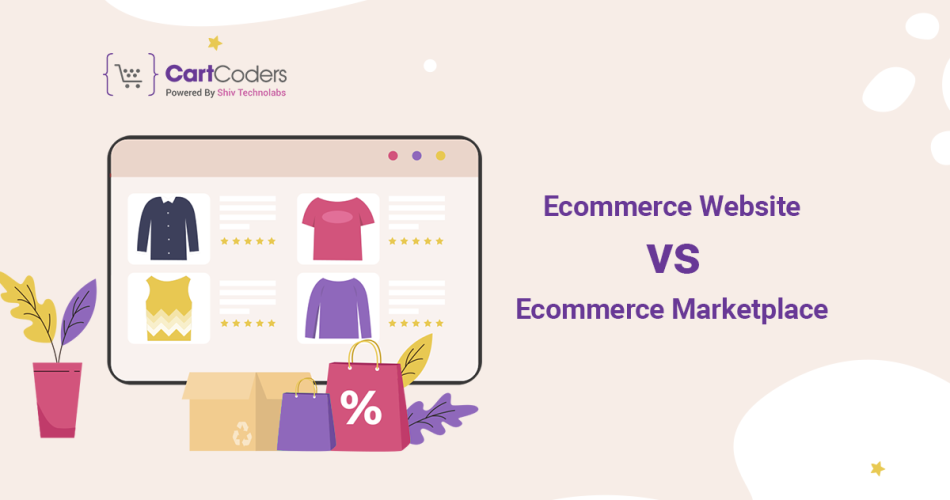
Any business must notice the necessity for online shopping as an essential part of retail. eCommerce will put brands and sellers right in the middle of all that action when 2.14 billion customers use it to purchase online products.
Nevertheless, there are a couple of things that you should think about before you start selling online. One of the most vital strategic considerations is whether you should use your website or an eCommerce marketplace.
More often than not, new retailers assume they are synonymous. Or they know the definitions but think they have the same function. Marketplaces and websites are two different types of channels with their unique characteristics.
Some sellers go for both an omnichannel strategy. However, this might not be a good idea, especially when your store needs more resources such as employees, products and services, or time. Beginners handling these sale points may spread themselves too thin with counterproductive consequences.
What is the best solution for your business and specific purpose?
In this POST, we dive into the main differences and benefits of eCommerce marketplaces and websites.
First, let’s look at the definitions of each term.
eCommerce marketplaces are online platforms where multiple vendors gather in order to market and often advertise their products. Customers pay the sellers directly, and the owner of the marketplace does not own inventory.
These include Amazon, eBay, AliExpress among others. There is also a scenario where buyers are offered an opportunity to choose on such marketplaces as a result of different prices for goods sold by many sellers.
Conversely, an entire eCommerce website belongs to the business owner himself. Also, he/she is responsible for charges, delivery, and stocks. It acts as a single vendor site.
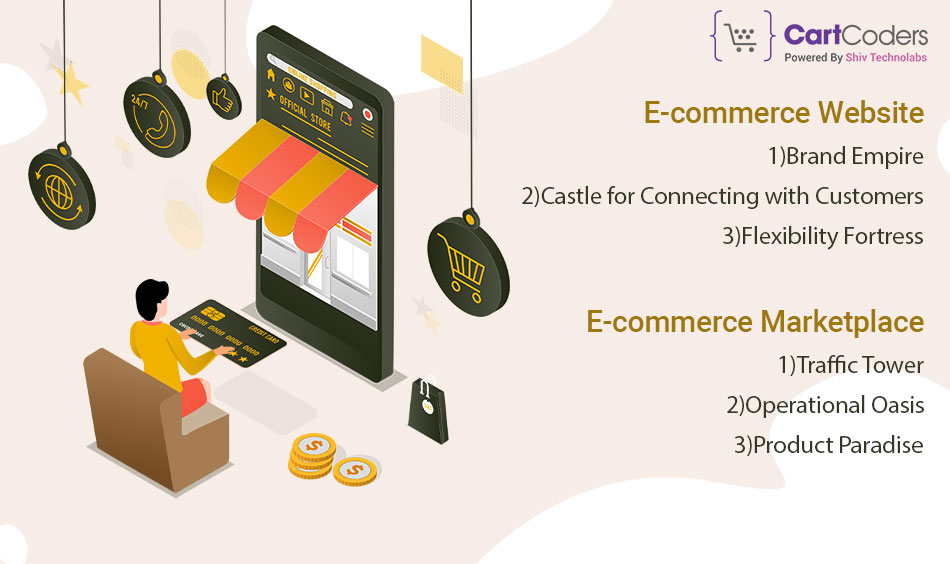
A battle of features separates a sleek control over your site from the bustling marketplace with instant customers.
Also Read:- Shopify Expert Cost for Multi Vendor Marketplace

| Feature | Marketplaces | Your Own eCommerce Website |
| Reach and Traffic | Large existing customer base of the marketplace | Requires building your own traffic through SEO, marketing, etc. |
| Ease of Setup | Quick and easy listing process | Requires setting up and managing your own website |
| Lower Costs | Often low or no listing fees | Website hosting, domain name, platform fees, etc. |
| Marketing Leverage | Marketplace may advertise your products | Full control over branding and marketing |
| Payment Handling | Marketplace handles transactions | Need to set up payment gateways and security |
| Customer Relationships | Limited interaction with customers | Direct communication and relationship building |
| Brand Control | Minimal brand visibility | Complete control over brand identity and customer experience |
| Profit Margin | Lower due to commission fees | Higher profit margins potentially |
| Competition | High competition with other sellers | Unique presence and can stand out more easily |
| Scalability | Easy to scale with existing marketplace infrastructure | Requires managing your own technical infrastructure for scaling |
However, whether to launch your own eCommerce website or sell on a marketplace is a decision that should be made by seriously considering issues such as brand control, customer reach, and costs. Each choice has its own price tag while the best option depends on your specific needs and abilities.
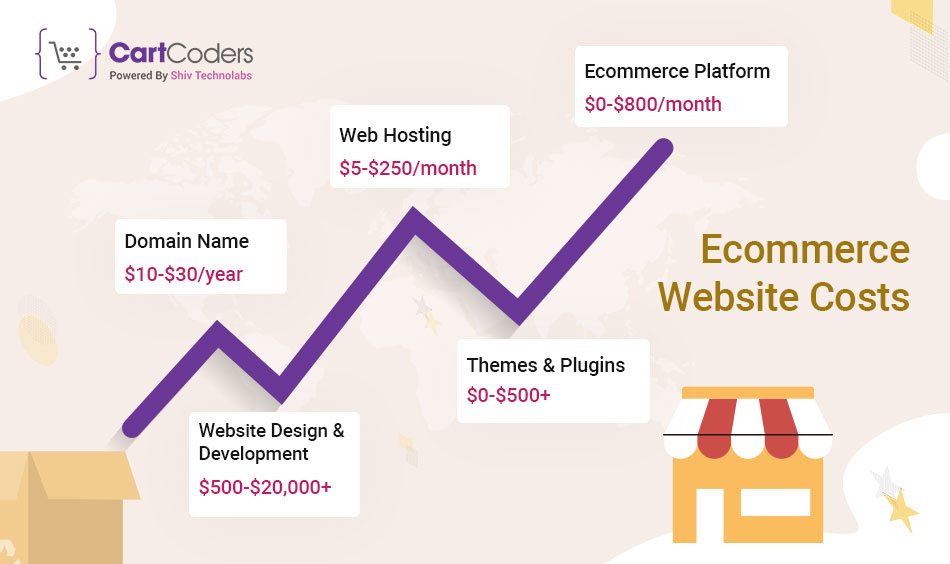
| Cost Category | Description | Estimated Range |
| Domain Name | Unique website address (e.g., yourstore.com) | $10-$30/year |
| Web Hosting | Storage and resources for your website files | $5-$250/month |
| eCommerce Platform | Software to manage your store and products | $0-$800/month |
| Website Design & Development | Building and customizing your website | $500-$20,000+ |
| Themes & Plugins | Additional features and functionality for your platform | $0-$500+ |
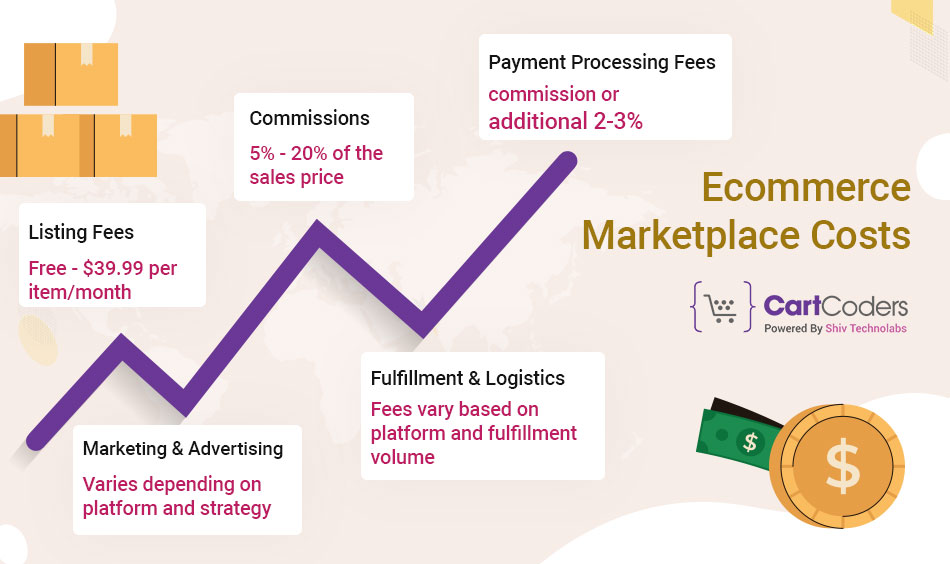
| Cost | Description | Estimated Range |
| Listing Fees | This includes the showing of your products where you must pay per item fee or monthly fee | Free – $39.99 per item/month |
| Commissions | A percentage for each sold item is retained by the platform. | 5% – 20% of the sales price |
| Payment Processing Fees | Platform transaction fees | May be included in commission or additional 2-3% |
| Marketing & Advertising | Limited control on the marketplace with possible off-platform marketing efforts required | Varies depending on platform and strategy |
| Fulfillment & Logistics | Some provide fulfillment services at cost, others require self-fulfillment. | Fees vary based on platform and fulfillment volume |
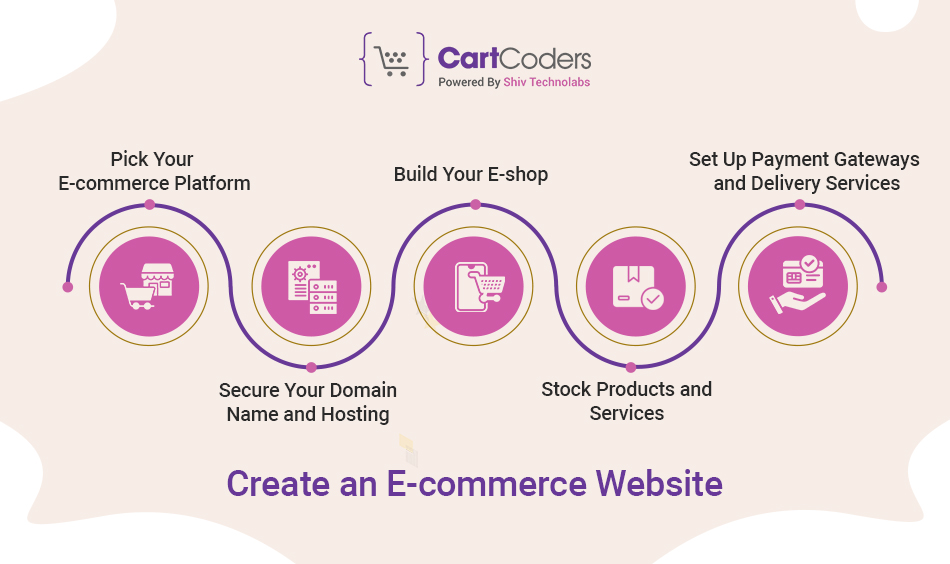
You have a fantastic product or service and would like to enter the vibrant eCommerce pool. Now what?
Building an online store can be overwhelming, though there is no need to worry about that! When you adopt the right approach, you will be able to set up your eCommerce website and start earning money within a short period of time.
Below is a step-by-step guide to enable you to follow through. Keep reading:
Deciding on the right eCommerce platform is very important since it becomes the bedrock of your online store. A few aspects to consider are simplicity, features, expandability, and cost implications. Below are some popular choices:
As a result, while choosing something remarkable and germane to your brand, remember that your domain name is your online address.
Therefore, hosting is its function of keeping your website’s files and ensuring visitors can access them. Thus, choose a reliable hosting provider with good uptime and customer support.
At this point, your playful mode turns on! What is the theme of your brand? Convert it into a user-friendly shopping experience with an attractive visual appearance. The site should be easy to navigate and have prominent calls to action while featuring great product visuals.
Now is the time to showcase your excellent merchandise online! The descriptions must be highly specific, visuals should be eye-catching, and prices should be affordable. Besides, sort them into groups and place appropriate Search Engine Optimization (SEO) words.
Allow your customers to check out with ease by providing them with payment methods such as PayPal and Stripe. In addition, provide alternative shipping modes and indicate the related costs and anticipated arrival dates.
On this POST, we assessed the pros and cons of trading on an eCommerce platform versus a marketplace. Both alternatives come with their own pluses and minuses; thus, choice depends on what you are targeting to achieve and how your business is set.
An eCommerce website would be preferable if you want control and flexibility. If you aim at accessing an existing customer base as well as reducing costs, then a marketplace could be more appropriate.
The most important thing is to choose a system that is a true reflection of your brand and enables the best user experience for customers.
Faqs
Certainly! You may use both of them. You can reach more people by this way that helps to expand your sales channels.
Definitely you must have knowledge in coding so that you can jump into creating a commercial website.
No. The rules on the brand image of the marketplace must be followed.
This will depend on your industry, target audience and product offering. Do your homework then select a market place that suits your business objectives.
Custom eCommerce website development may cost somewhere between several hundred dollars and few thousands depending on what one needs and has available in terms of resources.
Projects delivered in 15+ industries.
95% retention rate, building lasting partnerships.
Serving clients across 25+ countries.
60+ pros | 10+ years of experience.